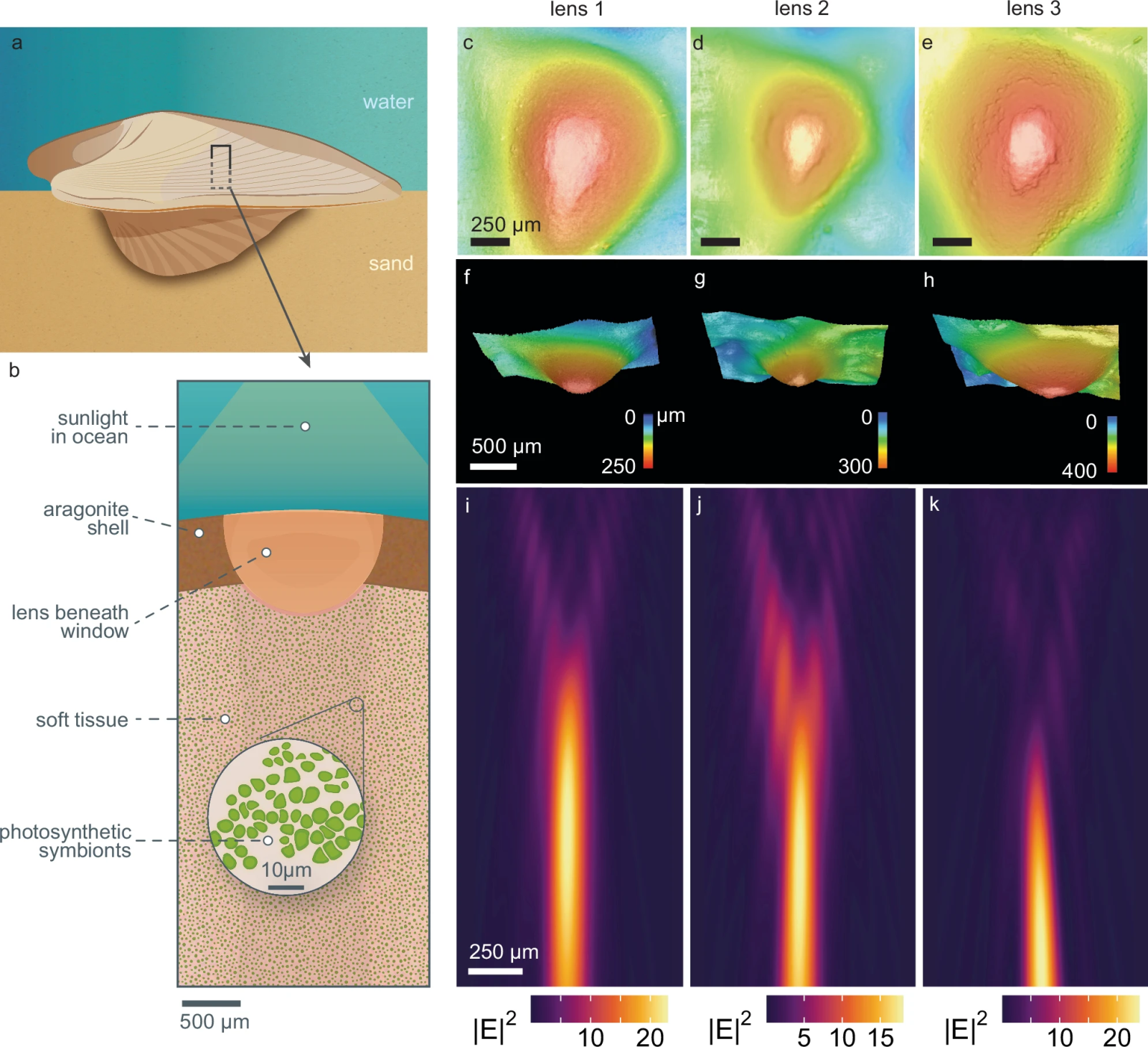These shells use their own fiber optics, but for what purpose? ☀️
Published by Cédric,
Article author: Cédric DEPOND
Source: Nature Communications
Other Languages: FR, DE, ES, PT
Article author: Cédric DEPOND
Source: Nature Communications
Other Languages: FR, DE, ES, PT
Follow us on Google News (click on ☆)
The heart cockles of Venus (Corculum cardissa), small bivalves found in the tropical waters of the Indo-Pacific, have an astonishing characteristic: they house photosynthetic algae beneath their shell. In exchange for this protection, these algae provide essential nutrients to the mollusks. But how does light reach these algae when the shell remains closed? Scientists have finally solved this mystery.

a) Lens tips are flattened.
b) A shell section reveals aragonite lenses, about 750 μm in diameter, with varying shapes and sizes depending on the shells.
c–e) 3D images of lenses viewed from below, showing differences in size and shape.
f–h) Side views of the lenses, where flattened tips are observed.
i–k) Optical simulations showing that the lenses focus light into a parallel beam (wavelength of 625 nm).
The shells of these cockles feature tiny translucent windows composed of aragonite crystals, a mineral with exceptional properties. These structures, aligned with remarkable precision, act as conduits for light. Upon analyzing this phenomenon, researchers found that aragonite optimally transmits certain wavelengths.
More specifically, these natural fibers allow the passage of light useful for photosynthesis while blocking ultraviolet rays. A dual feat: protecting the algae from genetic damage while providing them with the luminosity necessary for their growth. Dakota McCoy, from the University of Chicago, compares this function to that of a biological sunscreen, a highly sophisticated protection system.
To examine these windows, researchers used electronic microscopes and lasers. They discovered that beneath these openings lie even more surprising structures: small protrusions that act as lenses. Their role? To concentrate light into a precise beam that penetrates deep inside the shell, reaching the symbiotic algae.
Aragonite, used here in the form of ultra-thin fibers, is notable for its ability to transmit light, even without the insulation found in artificial optical fibers. Dakota McCoy suggests that this system could inspire technological innovations to design more efficient optical cables while reducing manufacturing costs.
The idea of drawing inspiration from living organisms for technological advances is not new. Previously, scientists had studied oysters to create stronger and more flexible glass. These heart cockles offer a new avenue, where biology and optics harmoniously intersect.
By mimicking these natural architectures, humans could design optical systems capable of transporting light over long distances, even under harsh conditions. This is further proof that nature, with millions of years of evolution, remains an inexhaustible source of inspiration.
How do mollusk shells channel light?
The shells of certain mollusks like the heart cockles of Venus contain natural structures capable of guiding light. Made of aragonite, a crystalline form of calcium carbonate, these fibers perform a role similar to our fiber optic cables.
These fine fibers, precisely aligned, specifically transmit the light useful for the photosynthesis of symbiotic algae. They block harmful ultraviolet rays while allowing the blue and red spectrum to pass through. This filtering ensures protection while optimizing the transmitted light energy.
Aragonite in the shells has unique properties: it channels light without protective coating. This naturally optimized material is now inspiring research to design more efficient, less expensive optical cables capable of transmitting light over long distances.